ADSP-21489BSWZ-4B vs ADSP-BF514KSWZ-4: Choosing the Right DSP
0.5mm Tin 5MB CPLD SHARC® Series ADSP-21489 176 Pin 400MHz 1.1V 176-LQFP Exposed Pad









0.5mm Tin 5MB CPLD SHARC® Series ADSP-21489 176 Pin 400MHz 1.1V 176-LQFP Exposed Pad
Compare ADSP-21489BSWZ-4B and ADSP-BF514KSWZ-4 processors. Discover their specs, performance, and applications to choose the best fit for your project.
Product Introduction
Choosing the right ADSP can feel overwhelming, especially when comparing the ADSP-21489BSWZ-4B and ADSP-BF514KSWZ-4. Both digital signal processors excel in different areas, but their capabilities cater to unique needs. The ADSP-21489BSWZ-4B stands out with its high computational power, making it ideal for complex signal processing tasks. On the other hand, the ADSP-BF514KSWZ-4 offers a compact form factor and low power footprint, perfect for space-constrained applications. Understanding these distinctions will help you make informed decisions and select the processor that aligns with your goals. Let’s dive into the insights that set these DSPs apart.
ADSP-21489BSWZ-4B vs ADSP-BF514KSWZ-4: Specifications Comparison
Clock Speed and Processing Power
When comparing the clock speed and processing power of the ADSP-21489BSWZ-4B and ADSP-BF514KSWZ-4, you’ll notice that both processors operate at a high maximum clock frequency of 400 MHz. This makes them well-suited for demanding applications requiring fast data processing. However, the ADSP-21489BSWZ-4B is optimized for intensive signal processing tasks, such as audio and multimedia applications, where computational power is critical. The ADSP-BF514KSWZ-4, while equally capable in terms of clock rate, is designed for applications where lower power consumption and compact design are priorities.
If your project demands high-speed processing with a focus on real-time performance, the ADSP-21489BSWZ-4B might be the better choice. On the other hand, if your power consumption needs are more stringent, the ADSP-BF514KSWZ-4 offers a balanced solution without compromising on clock speed.
Memory and Storage Capabilities
Memory plays a crucial role in determining how efficiently a processor handles data. The ADSP-21489BSWZ-4B features 116 kB of on-chip RAM, providing ample space for complex algorithms and large data sets. In contrast, the ADSP-BF514KSWZ-4 offers 64 kB of on-chip RAM, which is sufficient for less memory-intensive applications.
This difference in memory capacity highlights the ADSP-21489BSWZ-4B’s suitability for tasks requiring extensive data storage and manipulation. For example, audio signal processing often involves handling multiple data streams simultaneously, making the additional memory a significant advantage. If your application involves simpler tasks or embedded systems with limited memory requirements, the ADSP-BF514KSWZ-4 can meet your needs effectively.
Voltage and Power Consumption
The operating supply voltage and power consumption of a processor directly impact its efficiency and suitability for specific environments. The ADSP-21489BSWZ-4B operates within a voltage range of 1.1 V to 1.47 V, ensuring efficient power usage for high-performance tasks. The ADSP-BF514KSWZ-4, on the other hand, supports multiple voltage levels (1.8V, 2.5V, and 3.3V), offering greater flexibility for integration into various systems.
If your design prioritizes lower power consumption, the ADSP-BF514KSWZ-4 stands out as a versatile option. Its ability to operate at higher voltages also makes it suitable for applications requiring robust power management. Meanwhile, the ADSP-21489BSWZ-4B’s narrower voltage range aligns with its focus on delivering consistent performance in high-demand scenarios.
Here’s a detailed comparison of their specifications:
| Specification | ADSP-21489BSWZ-4B | ADSP-BF514KSWZ-4 |
|---|---|---|
| Manufacturer | ADI | Analog Devices, Inc |
| Package | LQFP-176 | LQFP-176 |
| Clock Rate | 400 MHz | 400 MHz |
| On-Chip RAM | 116 kB | 64 kB |
| Operating Supply Voltage | 1.1 V to 1.47 V | 1.8V, 2.5V, 3.3V |
| Operating Temperature | 0°C ~ 70°C | -40°C ~ 85°C |
| Number of I/Os | 40 I/O | 40 I/O |
| Data Bus Width | 16 bit | 16 bit |
This table provides a clear, side-by-side view of the features offered by each processor. Use it to identify which ADSP aligns best with your project’s requirements.
Operating Temperature Range
The operating temperature range of a processor determines where it can function reliably. This is especially important if you plan to use the processor in environments with extreme temperatures. The ADSP-21489BSWZ-4B and ADSP-BF514KSWZ-4 processors both support a wide temperature range, making them suitable for various applications.
Here’s a quick look at their operating temperature limits:
| Temperature Type | Value |
|---|---|
| Minimum Operating Temperature | -40°C |
| Maximum Operating Temperature | +85°C |
The ADSP-BF514KSWZ-4 stands out with its ability to operate in colder environments, down to -40°C. This makes it a great choice for outdoor or industrial applications where freezing temperatures are common. The ADSP-21489BSWZ-4B, while also capable of handling high temperatures, is better suited for controlled environments like labs or indoor systems.
When choosing between these processors, think about where your device will be used. If your application involves extreme cold or heat, the ADSP-BF514KSWZ-4 offers more flexibility. For standard temperature ranges, both processors perform equally well.
Interfaces and Connectivity Options
The interfaces and connectivity options of a processor determine how well it integrates with other components in your system. Both the ADSP-21489BSWZ-4B and ADSP-BF514KSWZ-4 offer a variety of interfaces, ensuring compatibility with a wide range of devices.
Here’s a comparison of their connectivity features:
| Feature | ADSP-21489BSWZ-4B | ADSP-BF514KSWZ-4 |
|---|---|---|
| Interface | I²C, PPI, RSI, SPI, SPORT, UART/USART | I²C, PPI, RSI, SPI, SPORT, UART/USART |
| Clock Rate | 400MHz | 400MHz |
| Voltage - I/O | 1.8V, 2.5V, 3.3V | 1.8V, 2.5V, 3.3V |
| Voltage - Core | 1.30V | 1.30V |
| On-Chip RAM | 116kB | 116kB |
| Operating Temperature | 0°C ~ 70°C (TA) | 0°C ~ 70°C (TA) |
Both processors support common interfaces like I²C, SPI, and UART/USART. These interfaces allow you to connect the processors to sensors, displays, and other peripherals. The inclusion of SPORT (Serial Port) is particularly useful for audio applications, as it enables high-speed data transfer.
If your project involves multimedia or audio processing, the ADSP-21489BSWZ-4B’s robust interface options make it a strong contender. For general-purpose embedded systems, the ADSP-BF514KSWZ-4 provides all the connectivity you need in a compact package.
By understanding the connectivity options, you can ensure that the processor you choose will integrate seamlessly into your design. Always consider the specific requirements of your application when evaluating these features.
Performance Comparison of ADSP Processors
Signal Processing Capabilities
ADSP processors excel in handling complex digital signal processing tasks, making them a top choice for applications requiring high computational capabilities. These digital signal processors are designed to process large amounts of data efficiently, ensuring accurate and reliable results. For example, ADSP processors have demonstrated exceptional performance in medical applications, such as analyzing ECG signals.
They effectively process signals for seven arrhythmia types, ensuring high-quality output.
They handle simulated interferences across various frequencies and amplitudes, proving their robustness.
Their integration into devices like Automated External Defibrillators (AEDs) ensures precise rhythm detection.
This level of efficiency makes ADSP processors ideal for industries where precision and reliability are critical.
Power Efficiency and Thermal Management
Power efficiency and thermal management are crucial for any processor, especially in embedded systems. ADSP processors, such as the ADSP-CM40x family, are designed to optimize both.
| Feature | Description |
|---|---|
| Processor Family | ADSP-CM40x |
| Architecture | ARM® Cortex®-M4F |
| Clock Rate | 240 MHz |
| Internal Memory | 2 MB flash, 384 kB SRAM |
| ADC Precision | 16-bit with 14-bit ENOB |
| Integration | Reduces latency and computing times |
| Additional Features | HAE for harmonic analysis, flexible memory integration |
These features ensure that ADSP processors maintain high performance while minimizing heat generation. This balance makes them suitable for applications requiring continuous operation, such as industrial automation and consumer electronics.
Real-Time Performance in Audio Applications
When it comes to real-time audio processing, ADSP processors stand out. Their ability to handle tasks like FFT calculations and FIR filtering with minimal latency ensures superior audio quality.
"With the new ADSP-2156x SHARC audio processor family, we are continuing to enable our customers with the performance scalability to build system cost-optimized solutions for highly deterministic and low-latency real-time audio processing applications in automotive, consumer, and professional audio."
Key advancements include:
Enhanced processing capabilities and low latency.
Integration of sophisticated algorithms for better system performance.
Significant improvements in sound quality and processing efficiency.
For instance, ADSP processors can perform a 1024-point complex FFT calculation in just 92 μs and execute FIR filtering at 5 ns per tap. These capabilities make them a preferred choice for audio engineers and developers working on high-performance audio systems.
Embedded Systems Performance
Embedded systems demand processors that deliver reliable and efficient performance. ADSP processors excel in this domain, offering features tailored to meet the needs of embedded applications. Their architecture ensures high-speed data processing, low latency, and seamless integration with other system components.
When evaluating embedded systems, benchmarks provide valuable insights into processor capabilities. The table below compares the ADSP-21160 SHARC processor with the TMS320C67x, highlighting key metrics:
| Benchmark | ADSP-21160 SHARC | TMS320C67x |
|---|---|---|
| Peak Performance (MFLOPS) | 600 | 1000 |
| Sustained Performance (MFLOPS) | 400 | 500-700 |
| External Memory Bandwidth | 534 MB/s | 667 MB/s |
| Total I/O Bandwidth | 1.134 GB/s | 667 MB/s |
| Internal Memory Size | 4 Mbit | 1 Mbit |
| DMA Channels | 14 | 4+1 |
| Interrupt Latency | 40 ns | 66 ns |
This comparison demonstrates the ADSP-21160 SHARC's strengths in sustained performance, internal memory size, and I/O bandwidth. These attributes make it a strong contender for applications requiring consistent data throughput and minimal delays.
You can also rely on ADSP processors for their advanced Direct Memory Access (DMA) capabilities. With 14 DMA channels, the ADSP-21160 SHARC supports efficient data transfers, reducing processor overhead. This feature is particularly beneficial for real-time systems where uninterrupted operation is critical.
In embedded systems, every millisecond counts. The ADSP-21160 SHARC's low interrupt latency ensures rapid response times, enhancing system reliability. Whether you're designing industrial automation tools or consumer electronics, ADSP processors provide the robust foundation you need for success.
Application Suitability of ADSP-21489BSWZ-4B and ADSP-BF514KSWZ-4
Best Use Cases for ADSP-21489BSWZ-4B
The ADSP-21489BSWZ-4B excels in applications requiring advanced audio and video processing. Its high computational power and 116kB of on-chip RAM make it ideal for tasks involving complex algorithms and large data sets. If you are working on audio signal processing, this digital signal processor offers the precision and speed needed for real-time performance.
This processor is particularly well-suited for professional audio equipment, such as mixers and audio interfaces. Its ability to handle multiple data streams simultaneously ensures high-quality output. Additionally, the ADSP-21489BSWZ-4B performs exceptionally well in multimedia systems, where high-speed data processing and low latency are critical.
For industrial applications, this DSP provides reliable performance in controlled environments. Its operating temperature range of 0°C to 70°C makes it a dependable choice for indoor systems. If your project involves high-demand scenarios, such as audio workstations or video editing tools, this processor offers the features you need to succeed.
Best Use Cases for ADSP-BF514KSWZ-4
The ADSP-BF514KSWZ-4 shines in cost-sensitive applications where power efficiency and compact design are priorities. Its 64kB of on-chip RAM and flexible voltage options make it a versatile choice for embedded systems. If you are designing portable devices, this processor’s low power consumption ensures extended battery life without compromising performance.
This ADSP is an excellent fit for consumer electronics, such as smart home devices and wearable technology. Its ability to operate in temperatures as low as -40°C also makes it suitable for outdoor and industrial environments. For example, you can use it in monitoring systems or IoT devices that need to function reliably in harsh conditions.
The ADSP-BF514KSWZ-4 also supports a wide range of interfaces, including I²C, SPI, and UART/USART. These features make it easy to integrate into various systems, from automotive applications to compact medical devices. If your project requires a balance between performance and cost, this processor delivers an efficient solution.
Scenarios Where Both Processors Could Be Used
In some cases, both the ADSP-21489BSWZ-4B and ADSP-BF514KSWZ-4 can meet your needs. For example, both processors support advanced audio and video processing capabilities, making them suitable for multimedia applications. If your project involves audio playback or recording, either processor can handle the task effectively.
Both processors also share a maximum clock rate of 400MHz, ensuring fast data processing. Their support for common interfaces, such as SPI and UART/USART, allows seamless integration with other components. This makes them viable options for embedded systems requiring reliable connectivity.
Here’s a quick comparison of their features to help you decide:
| Feature | ADSP-21489BSWZ-4B | ADSP-BF514KSWZ-4 |
|---|---|---|
| Manufacturer | ADI | Analog Devices, Inc |
| Package | LQFP-176 | LQFP-176 |
| Description | Advanced audio and video processing capabilities | Advanced audio and video processing capabilities |
| Clock Rate | 400MHz | 400MHz |
| On-Chip RAM | 116kB | 128kB |
| Voltage - I/O | 1.8V, 2.5V, 3.3V | 1.8V, 2.5V, 3.3V |
| Voltage - Core | 1.30V | 1.30V |
| Operating Temperature | 0°C ~ 70°C (TA) | 0°C ~ 70°C (TA) |
| Mounting Type | Surface Mount | Surface Mount |
If your application involves standard temperature ranges and requires high-speed processing, both processors can deliver reliable performance. However, your final selection should depend on specific requirements, such as memory capacity, power consumption, and cost constraints.
Factors to Consider When Choosing Between the Two
When selecting between the ADSP-21489BSWZ-4B and ADSP-BF514KSWZ-4, you need to evaluate several factors to make informed decisions. Each processor offers unique advantages, but your choice should align with your project’s requirements. Here are the key considerations to guide your selection:
1. Voltage Range and Power Consumption
The voltage range and power consumption of a processor affect its efficiency and compatibility with your system. The ADSP-21489BSWZ-4B operates within a narrower voltage range, making it ideal for high-performance tasks that demand consistent power delivery. The ADSP-BF514KSWZ-4 supports multiple voltage levels, offering flexibility for integration into diverse systems.
If your project prioritizes energy efficiency, the ADSP-BF514KSWZ-4 provides a better option. Its lower power consumption makes it suitable for portable devices and applications requiring extended battery life. On the other hand, the ADSP-21489BSWZ-4B excels in scenarios where computational power outweighs energy constraints.
2. Package Size and Space Constraints
The physical size of the processor plays a crucial role in component selection, especially for compact designs. Both processors share the same LQFP-176 package, ensuring compatibility with standard mounting options. However, the ADSP-BF514KSWZ-4’s compact design and lower memory footprint make it a better fit for space-constrained applications like wearable devices or IoT systems.
If your design involves larger systems, such as audio workstations or multimedia setups, the ADSP-21489BSWZ-4B’s additional memory and processing capabilities provide a significant advantage.
3. Stock Availability and Project Timeline
Availability can impact your project timeline and component selection. Before making a decision, check the stock status of both processors. If one is readily available while the other requires a longer lead time, this factor could influence your choice.
Tip: Always plan for potential delays in procurement. Stock availability can vary based on demand and supplier inventory, so ensure you have backup options to avoid project disruptions.
4. Application Requirements
Your application’s specific needs should drive your selection. For audio and video processing tasks, the ADSP-21489BSWZ-4B’s higher memory capacity and computational power make it the preferred choice. For embedded systems or portable devices, the ADSP-BF514KSWZ-4’s energy efficiency and flexibility shine.
Here’s a comparison table to help you evaluate these factors:
| Factor | ADSP-21489BSWZ-4B | ADSP-BF514KSWZ-4 |
|---|---|---|
| Voltage Range | 1.1 V to 1.47 V | 1.8 V, 2.5 V, 3.3 V |
| Power Consumption | Higher | Lower |
| Package Size | LQFP-176 | LQFP-176 |
| Stock Availability | Available | Available |
5. Budget Constraints
Cost is another critical factor in processor selection. The ADSP-BF514KSWZ-4 offers a cost-effective solution for projects with tight budgets. Its balance between performance and affordability makes it ideal for consumer electronics and low-cost embedded systems.
If your project demands high-end features and you have the budget to support them, the ADSP-21489BSWZ-4B delivers unmatched performance for professional-grade applications.
6. Long-Term Scalability
Consider the scalability of your design. If your project might expand to include more complex tasks, the ADSP-21489BSWZ-4B’s higher memory and processing power provide room for growth. For simpler applications with limited future requirements, the ADSP-BF514KSWZ-4 offers a streamlined solution.
By evaluating these factors, you can make informed decisions that align with your project’s goals. Whether you prioritize performance, efficiency, or cost, understanding the strengths of each processor ensures the right selection for your needs.
Choosing between the ADSP-21489BSWZ-4B and ADSP-BF514KSWZ-4 depends on your project’s priorities. The ADSP-21489BSWZ-4B excels in high-performance tasks like audio and video processing, thanks to its larger memory and computational power. Meanwhile, the ADSP-BF514KSWZ-4 offers energy efficiency and flexibility, making it ideal for compact, cost-sensitive designs.
Tip: If your project demands advanced signal processing, go with the ADSP-21489BSWZ-4B. For portable or embedded systems, the ADSP-BF514KSWZ-4 is a better fit.
Evaluate your application’s requirements to make the best choice.
FAQ
1. How do I decide which processor is better for my project?
Evaluate your project’s needs. If you require high computational power for tasks like audio processing, choose the ADSP-21489BSWZ-4B. For energy-efficient, compact designs, the ADSP-BF514KSWZ-4 is better.
Tip: Focus on your application’s memory, power, and performance requirements to make the best choice.
2. Can both processors handle real-time audio processing?
Yes, both processors support real-time audio processing. The ADSP-21489BSWZ-4B excels in professional-grade audio systems due to its higher memory. The ADSP-BF514KSWZ-4 works well for simpler audio tasks in embedded systems.
3. Which processor is more suitable for outdoor applications?
The ADSP-BF514KSWZ-4 is better for outdoor use. It operates in temperatures as low as -40°C, making it ideal for harsh environments. The ADSP-21489BSWZ-4B performs best in controlled indoor conditions.
4. Are these processors compatible with IoT devices?
Yes, both processors integrate well with IoT devices. Their support for interfaces like I²C and SPI ensures seamless connectivity. The ADSP-BF514KSWZ-4 is particularly suited for IoT due to its low power consumption.
5. What is the key difference in memory between the two processors?
The ADSP-21489BSWZ-4B offers 116 kB of on-chip RAM, while the ADSP-BF514KSWZ-4 provides 64 kB. This makes the ADSP-21489BSWZ-4B better for memory-intensive tasks like multimedia processing.
Note: Choose based on your application’s memory demands.
Specifications
- TypeParameter
- Lifecycle Status
Lifecycle Status refers to the current stage of an electronic component in its product life cycle, indicating whether it is active, obsolete, or transitioning between these states. An active status means the component is in production and available for purchase. An obsolete status indicates that the component is no longer being manufactured or supported, and manufacturers typically provide a limited time frame for support. Understanding the lifecycle status is crucial for design engineers to ensure continuity and reliability in their projects.
PRODUCTION (Last Updated: 1 month ago) - Factory Lead Time16 Weeks
- Contact Plating
Contact plating (finish) provides corrosion protection for base metals and optimizes the mechanical and electrical properties of the contact interfaces.
Tin - Mount
In electronic components, the term "Mount" typically refers to the method or process of physically attaching or fixing a component onto a circuit board or other electronic device. This can involve soldering, adhesive bonding, or other techniques to secure the component in place. The mounting process is crucial for ensuring proper electrical connections and mechanical stability within the electronic system. Different components may have specific mounting requirements based on their size, shape, and function, and manufacturers provide guidelines for proper mounting procedures to ensure optimal performance and reliability of the electronic device.
Surface Mount - Mounting Type
The "Mounting Type" in electronic components refers to the method used to attach or connect a component to a circuit board or other substrate, such as through-hole, surface-mount, or panel mount.
Surface Mount - Package / Case
refers to the protective housing that encases an electronic component, providing mechanical support, electrical connections, and thermal management.
176-LQFP Exposed Pad - Number of Pins176
- Memory TypesROMless
- Number of I/Os16
- Operating Temperature
The operating temperature is the range of ambient temperature within which a power supply, or any other electrical equipment, operate in. This ranges from a minimum operating temperature, to a peak or maximum operating temperature, outside which, the power supply may fail.
-40°C~85°C TA - Packaging
Semiconductor package is a carrier / shell used to contain and cover one or more semiconductor components or integrated circuits. The material of the shell can be metal, plastic, glass or ceramic.
Tray - Series
In electronic components, the "Series" refers to a group of products that share similar characteristics, designs, or functionalities, often produced by the same manufacturer. These components within a series typically have common specifications but may vary in terms of voltage, power, or packaging to meet different application needs. The series name helps identify and differentiate between various product lines within a manufacturer's catalog.
SHARC® - JESD-609 Code
The "JESD-609 Code" in electronic components refers to a standardized marking code that indicates the lead-free solder composition and finish of electronic components for compliance with environmental regulations.
e3 - Pbfree Code
The "Pbfree Code" parameter in electronic components refers to the code or marking used to indicate that the component is lead-free. Lead (Pb) is a toxic substance that has been widely used in electronic components for many years, but due to environmental concerns, there has been a shift towards lead-free alternatives. The Pbfree Code helps manufacturers and users easily identify components that do not contain lead, ensuring compliance with regulations and promoting environmentally friendly practices. It is important to pay attention to the Pbfree Code when selecting electronic components to ensure they meet the necessary requirements for lead-free applications.
no - Part Status
Parts can have many statuses as they progress through the configuration, analysis, review, and approval stages.
Active - Moisture Sensitivity Level (MSL)
Moisture Sensitivity Level (MSL) is a standardized rating that indicates the susceptibility of electronic components, particularly semiconductors, to moisture-induced damage during storage and the soldering process, defining the allowable exposure time to ambient conditions before they require special handling or baking to prevent failures
3 (168 Hours) - Number of Terminations176
- TypeFloating Point
- Terminal Position
In electronic components, the term "Terminal Position" refers to the physical location of the connection points on the component where external electrical connections can be made. These connection points, known as terminals, are typically used to attach wires, leads, or other components to the main body of the electronic component. The terminal position is important for ensuring proper connectivity and functionality of the component within a circuit. It is often specified in technical datasheets or component specifications to help designers and engineers understand how to properly integrate the component into their circuit designs.
QUAD - Terminal Form
Occurring at or forming the end of a series, succession, or the like; closing; concluding.
GULL WING - Peak Reflow Temperature (Cel)
Peak Reflow Temperature (Cel) is a parameter that specifies the maximum temperature at which an electronic component can be exposed during the reflow soldering process. Reflow soldering is a common method used to attach electronic components to a circuit board. The Peak Reflow Temperature is crucial because it ensures that the component is not damaged or degraded during the soldering process. Exceeding the specified Peak Reflow Temperature can lead to issues such as component failure, reduced performance, or even permanent damage to the component. It is important for manufacturers and assemblers to adhere to the recommended Peak Reflow Temperature to ensure the reliability and functionality of the electronic components.
260 - Supply Voltage
Supply voltage refers to the electrical potential difference provided to an electronic component or circuit. It is crucial for the proper operation of devices, as it powers their functions and determines performance characteristics. The supply voltage must be within specified limits to ensure reliability and prevent damage to components. Different electronic devices have specific supply voltage requirements, which can vary widely depending on their design and intended application.
1.1V - Terminal Pitch
The center distance from one pole to the next.
0.5mm - Frequency
In electronic components, the parameter "Frequency" refers to the rate at which a signal oscillates or cycles within a given period of time. It is typically measured in Hertz (Hz) and represents how many times a signal completes a full cycle in one second. Frequency is a crucial aspect in electronic components as it determines the behavior and performance of various devices such as oscillators, filters, and communication systems. Understanding the frequency characteristics of components is essential for designing and analyzing electronic circuits to ensure proper functionality and compatibility with other components in a system.
400MHz - Time@Peak Reflow Temperature-Max (s)
Time@Peak Reflow Temperature-Max (s) refers to the maximum duration that an electronic component can be exposed to the peak reflow temperature during the soldering process, which is crucial for ensuring reliable solder joint formation without damaging the component.
30 - Base Part Number
The "Base Part Number" (BPN) in electronic components serves a similar purpose to the "Base Product Number." It refers to the primary identifier for a component that captures the essential characteristics shared by a group of similar components. The BPN provides a fundamental way to reference a family or series of components without specifying all the variations and specific details.
ADSP-21489 - Pin Count
a count of all of the component leads (or pins)
176 - Operating Supply Voltage
The voltage level by which an electrical system is designated and to which certain operating characteristics of the system are related.
1.1V - Interface
In electronic components, the term "Interface" refers to the point at which two different systems, devices, or components connect and interact with each other. It can involve physical connections such as ports, connectors, or cables, as well as communication protocols and standards that facilitate the exchange of data or signals between the connected entities. The interface serves as a bridge that enables seamless communication and interoperability between different parts of a system or between different systems altogether. Designing a reliable and efficient interface is crucial in ensuring proper functionality and performance of electronic components and systems.
EBI/EMI, DAI, I2C, SPI, SPORT, UART/USART - Max Supply Voltage
In general, the absolute maximum common-mode voltage is VEE-0.3V and VCC+0.3V, but for products without a protection element at the VCC side, voltages up to the absolute maximum rated supply voltage (i.e. VEE+36V) can be supplied, regardless of supply voltage.
3.47V - Min Supply Voltage
The minimum supply voltage (V min ) is explored for sequential logic circuits by statistically simulating the impact of within-die process variations and gate-dielectric soft breakdown on data retention and hold time.
1.05V - Memory Size
The memory capacity is the amount of data a device can store at any given time in its memory.
5MB - RAM Size
RAM size refers to the amount of random access memory (RAM) available in an electronic component, such as a computer or smartphone. RAM is a type of volatile memory that stores data and instructions that are actively being used by the device's processor. The RAM size is typically measured in gigabytes (GB) and determines how much data the device can store and access quickly for processing. A larger RAM size allows for smoother multitasking, faster loading times, and better overall performance of the electronic component. It is an important factor to consider when choosing a device, especially for tasks that require a lot of memory, such as gaming, video editing, or running multiple applications simultaneously.
640kB - Number of Bits32
- Bit Size
In electronic components, "Bit Size" refers to the number of bits that can be processed or stored by a particular component. A bit is the smallest unit of data in computing and can have a value of either 0 or 1. The Bit Size parameter is commonly used to describe the capacity or performance of components such as microprocessors, memory modules, and data buses. A larger Bit Size generally indicates a higher processing capability or storage capacity, allowing for more complex operations and larger amounts of data to be handled efficiently. It is an important specification to consider when selecting electronic components for specific applications that require certain levels of performance and data processing capabilities.
40 - Data Bus Width
The data bus width in electronic components refers to the number of bits that can be transferred simultaneously between the processor and memory. It determines the amount of data that can be processed and transferred in a single operation. A wider data bus allows for faster data transfer speeds and improved overall performance of the electronic device. Common data bus widths include 8-bit, 16-bit, 32-bit, and 64-bit, with higher numbers indicating a larger capacity for data transfer. The data bus width is an important specification to consider when evaluating the speed and efficiency of a computer system or other electronic device.
32b - Core Architecture
In electronic components, the term "Core Architecture" refers to the fundamental design and structure of the component's internal circuitry. It encompasses the arrangement of key components, such as processors, memory units, and input/output interfaces, within the device. The core architecture plays a crucial role in determining the component's performance, power efficiency, and overall capabilities. Different core architectures are optimized for specific applications and requirements, such as high-speed processing, low power consumption, or specialized functions. Understanding the core architecture of electronic components is essential for engineers and designers to select the most suitable components for their projects.
SHARC - Boundary Scan
Boundary scan is a testing technique used in electronic components to verify the interconnections between integrated circuits on a printed circuit board. It allows for the testing of digital circuits by providing a way to shift data in and out of devices through a serial interface. This method helps in identifying faults such as short circuits, open circuits, and incorrect connections without the need for physical access to the individual components. Boundary scan is commonly used during manufacturing, testing, and debugging processes to ensure the quality and reliability of electronic products.
YES - Low Power Mode
Low Power Mode is a feature found in electronic components, such as microcontrollers, processors, and devices, that allows them to operate at reduced power consumption levels. When activated, the component typically reduces its clock speed, voltage, or disables certain functions to conserve energy. This mode is often used to extend battery life in portable devices or reduce overall power consumption in energy-efficient systems. Low Power Mode can be triggered automatically based on certain conditions, such as low battery levels, or manually by the user or software. It is a crucial feature in modern electronics to balance performance with energy efficiency.
NO - Integrated Cache
Integrated Cache refers to a type of memory storage that is built directly into a microprocessor or other electronic component. It is used to temporarily store frequently accessed data and instructions to speed up processing and reduce latency. The integrated cache is designed to provide quick access to data that the processor needs to perform its tasks efficiently. By storing data closer to the processor, the integrated cache helps improve overall system performance by reducing the time it takes to retrieve information from the main memory. The size and speed of the integrated cache can have a significant impact on the performance of the electronic component, making it an important parameter to consider when evaluating the capabilities of a device.
YES - Voltage - I/O
Voltage - I/O is a parameter that refers to the voltage levels at the input and output pins of an electronic component, such as an integrated circuit or a semiconductor device. It specifies the range of voltages that the component can accept at its input pins and the voltages it will output at its output pins under normal operating conditions. This parameter is crucial for ensuring proper functionality and compatibility with other components in a circuit. It helps designers determine the appropriate voltage levels to use when interfacing with the component to prevent damage and ensure reliable operation.
3.30V - Number of I2C Channels1
- Non-Volatile Memory
Non-Volatile Memory refers to a type of storage technology that retains data even when power is turned off. It is essential for preserving important information in electronic devices, such as computers and smartphones. Common examples of non-volatile memory include Flash memory, EEPROM, and ROM. This characteristic makes non-volatile memory crucial for applications where data integrity and retention are required without a continuous power supply.
External - Voltage - Core
Voltage - Core is a parameter that refers to the voltage required to power the core of an electronic component, such as a microprocessor or a graphics processing unit (GPU). The core voltage is essential for the proper functioning of the component, as it provides the necessary power for the core to perform its operations. The voltage level is typically specified by the manufacturer and must be within a certain range to ensure the component operates reliably and efficiently. Monitoring and controlling the core voltage is crucial in maintaining the stability and performance of the electronic component.
1.10V - On Chip Data RAM
On Chip Data RAM refers to a type of memory that is integrated directly onto a microprocessor or other integrated circuit. This RAM is used for storing data temporarily while the device is in operation, allowing for quick access and retrieval of information. On Chip Data RAM is typically faster than external memory due to its proximity to the processor, which helps improve overall system performance. It is commonly used in various electronic components such as microcontrollers, CPUs, and DSPs to facilitate efficient data processing and manipulation.
5Mbit - Number of SPI Channels2
- Height1.45mm
- Length24.1mm
- Width24.1mm
- REACH SVHC
The parameter "REACH SVHC" in electronic components refers to the compliance with the Registration, Evaluation, Authorization, and Restriction of Chemicals (REACH) regulation regarding Substances of Very High Concern (SVHC). SVHCs are substances that may have serious effects on human health or the environment, and their use is regulated under REACH to ensure their safe handling and minimize their impact.Manufacturers of electronic components need to declare if their products contain any SVHCs above a certain threshold concentration and provide information on the safe use of these substances. This information allows customers to make informed decisions about the potential risks associated with using the components and take appropriate measures to mitigate any hazards.Ensuring compliance with REACH SVHC requirements is essential for electronics manufacturers to meet regulatory standards, protect human health and the environment, and maintain transparency in their supply chain. It also demonstrates a commitment to sustainability and responsible manufacturing practices in the electronics industry.
No SVHC - Radiation Hardening
Radiation hardening is the process of making electronic components and circuits resistant to damage or malfunction caused by high levels of ionizing radiation, especially for environments in outer space (especially beyond the low Earth orbit), around nuclear reactors and particle accelerators, or during nuclear accidents or nuclear warfare.
No - RoHS Status
RoHS means “Restriction of Certain Hazardous Substances” in the “Hazardous Substances Directive” in electrical and electronic equipment.
ROHS3 Compliant - Lead Free
Lead Free is a term used to describe electronic components that do not contain lead as part of their composition. Lead is a toxic material that can have harmful effects on human health and the environment, so the electronics industry has been moving towards lead-free components to reduce these risks. Lead-free components are typically made using alternative materials such as silver, copper, and tin. Manufacturers must comply with regulations such as the Restriction of Hazardous Substances (RoHS) directive to ensure that their products are lead-free and environmentally friendly.
Contains Lead
Parts with Similar Specs
- ImagePart NumberManufacturerPackage / CaseNumber of PinsData Bus WidthInterfaceMemory TypeMemory SizeRAM SizeMin Supply VoltageSupply VoltageView Compare
ADSP-21489BSWZ-4B
176-LQFP Exposed Pad
176
32 b
EBI/EMI, DAI, I2C, SPI, SPORT, UART/USART
ROMless
5 MB
640 kB
1.05 V
1.1 V
176-LQFP
176
32 b
Host Interface, I2C, McBSP, UART
-
32 kB
64 kB
1.2 V
1.26 V
176-LQFP
176
32 b
Host Interface, I2C, McBSP, UART
EPROM, ROM, SDRAM, SRAM
32 kB
32 kB
1.2 V
1.26 V
176-LQFP
176
32 b
Host Interface, I2C, McBSP, UART
EPROM, ROM, SDRAM, SRAM
32 kB
64 kB
1.2 V
1.26 V
176-LQFP Exposed Pad
176
32 b
CAN, I2C, SPI, SPORT, UART/USART, USB
-
2 MB
48 kB
3.13 V
3.3 V
Datasheet PDF
- Datasheets :
- PCN Assembly/Origin :
- Other Related Documents :
- ConflictMineralStatement :
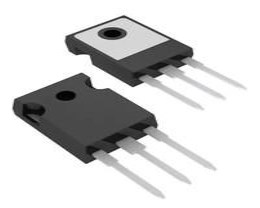 IRFP9240 Power MOSFET : Datasheet, Pinout and Equivalent
IRFP9240 Power MOSFET : Datasheet, Pinout and Equivalent26 August 20216728
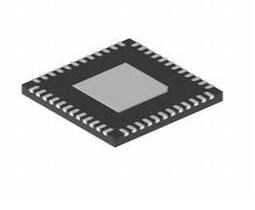 KSZ9031RNXIA Transceiver Full Ethernet 48-QFN: KSZ9031RNXIA VS KSZ9021RN, Datasheet, and Equivalents
KSZ9031RNXIA Transceiver Full Ethernet 48-QFN: KSZ9031RNXIA VS KSZ9021RN, Datasheet, and Equivalents10 February 20222620
 MC68HC705C8ACFNE: Trusted Sourcing Guide for Microcontroller Components
MC68HC705C8ACFNE: Trusted Sourcing Guide for Microcontroller Components07 June 2025160
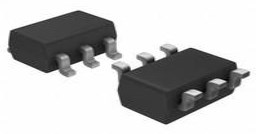 TPS2553DBVR Power-Distribution Switch: Layout, Pinout, and Datasheet
TPS2553DBVR Power-Distribution Switch: Layout, Pinout, and Datasheet25 March 20223119
 MIC2042 High-side MOSFET Switch: Pinout, Equivalent and Datasheet
MIC2042 High-side MOSFET Switch: Pinout, Equivalent and Datasheet01 April 2022519
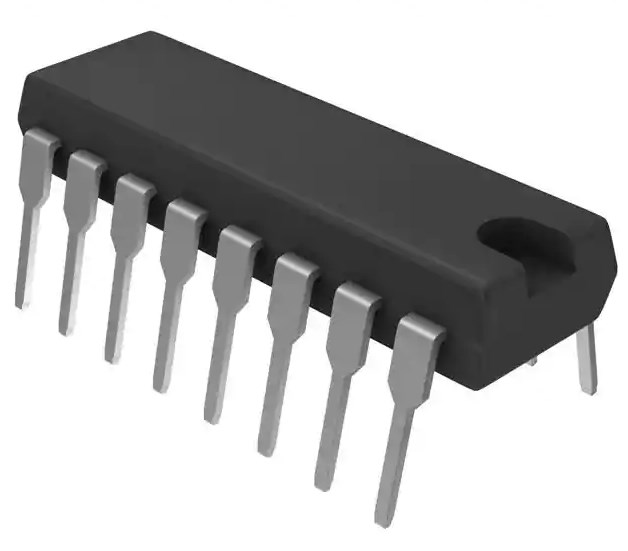 TL494 Control Circuit: Features, Specifications and Applications
TL494 Control Circuit: Features, Specifications and Applications13 May 20212890
![BT136 Triac: Datasheet, Pinout, Equivalent [FAQ+Video]](https://res.utmel.com/Images/Article/0be48a6e-a6da-45ab-8fe4-5479340e5205.jpg) BT136 Triac: Datasheet, Pinout, Equivalent [FAQ+Video]
BT136 Triac: Datasheet, Pinout, Equivalent [FAQ+Video]02 April 20227577
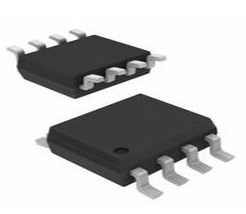 ATTINY45 Microcontroller: Pinout, Specifications and Datasheet
ATTINY45 Microcontroller: Pinout, Specifications and Datasheet19 October 20214689
 Everything You Need to Know about Connectors
Everything You Need to Know about Connectors07 September 20216207
 Introduction to MD8002A Audio Amplifier
Introduction to MD8002A Audio Amplifier27 March 20256497
 Capacitor Signs: Decoding Symbols & Markings
Capacitor Signs: Decoding Symbols & Markings14 August 20253152
 Intel CEO Reiterates: 2024 Will Achieve Process Leadership
Intel CEO Reiterates: 2024 Will Achieve Process Leadership05 May 20221102
 What is a Servo Drive?
What is a Servo Drive?16 June 20213769
 Switching Regulator Noise: Comprehensive Understanding and Analysis
Switching Regulator Noise: Comprehensive Understanding and Analysis26 February 20222220
 Using SiC-GaN to Create Two-Phase Interleaved DC-DC Converters for Plug-in Electric Vehicles
Using SiC-GaN to Create Two-Phase Interleaved DC-DC Converters for Plug-in Electric Vehicles03 February 20232371
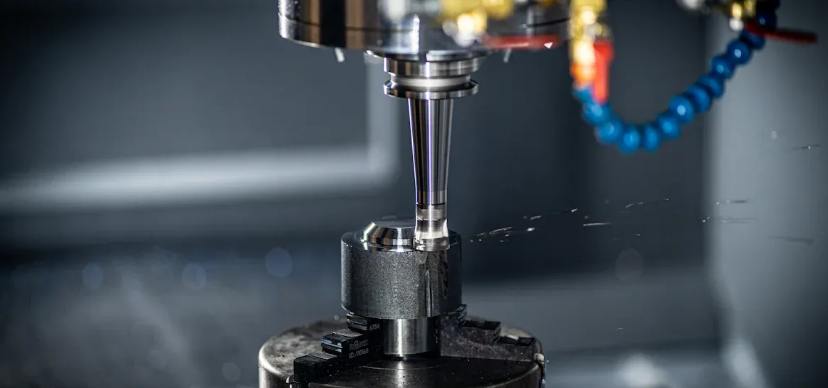 Top 10 High-Performance End Mills for Metalworking in 2025
Top 10 High-Performance End Mills for Metalworking in 202517 July 20251130
Analog Devices Inc.
In Stock
United States
China
Canada
Japan
Russia
Germany
United Kingdom
Singapore
Italy
Hong Kong(China)
Taiwan(China)
France
Korea
Mexico
Netherlands
Malaysia
Austria
Spain
Switzerland
Poland
Thailand
Vietnam
India
United Arab Emirates
Afghanistan
Åland Islands
Albania
Algeria
American Samoa
Andorra
Angola
Anguilla
Antigua & Barbuda
Argentina
Armenia
Aruba
Australia
Azerbaijan
Bahamas
Bahrain
Bangladesh
Barbados
Belarus
Belgium
Belize
Benin
Bermuda
Bhutan
Bolivia
Bonaire, Sint Eustatius and Saba
Bosnia & Herzegovina
Botswana
Brazil
British Indian Ocean Territory
British Virgin Islands
Brunei
Bulgaria
Burkina Faso
Burundi
Cabo Verde
Cambodia
Cameroon
Cayman Islands
Central African Republic
Chad
Chile
Christmas Island
Cocos (Keeling) Islands
Colombia
Comoros
Congo
Congo (DRC)
Cook Islands
Costa Rica
Côte d’Ivoire
Croatia
Cuba
Curaçao
Cyprus
Czechia
Denmark
Djibouti
Dominica
Dominican Republic
Ecuador
Egypt
El Salvador
Equatorial Guinea
Eritrea
Estonia
Eswatini
Ethiopia
Falkland Islands
Faroe Islands
Fiji
Finland
French Guiana
French Polynesia
Gabon
Gambia
Georgia
Ghana
Gibraltar
Greece
Greenland
Grenada
Guadeloupe
Guam
Guatemala
Guernsey
Guinea
Guinea-Bissau
Guyana
Haiti
Honduras
Hungary
Iceland
Indonesia
Iran
Iraq
Ireland
Isle of Man
Israel
Jamaica
Jersey
Jordan
Kazakhstan
Kenya
Kiribati
Kosovo
Kuwait
Kyrgyzstan
Laos
Latvia
Lebanon
Lesotho
Liberia
Libya
Liechtenstein
Lithuania
Luxembourg
Macao(China)
Madagascar
Malawi
Maldives
Mali
Malta
Marshall Islands
Martinique
Mauritania
Mauritius
Mayotte
Micronesia
Moldova
Monaco
Mongolia
Montenegro
Montserrat
Morocco
Mozambique
Myanmar
Namibia
Nauru
Nepal
New Caledonia
New Zealand
Nicaragua
Niger
Nigeria
Niue
Norfolk Island
North Korea
North Macedonia
Northern Mariana Islands
Norway
Oman
Pakistan
Palau
Palestinian Authority
Panama
Papua New Guinea
Paraguay
Peru
Philippines
Pitcairn Islands
Portugal
Puerto Rico
Qatar
Réunion
Romania
Rwanda
Samoa
San Marino
São Tomé & Príncipe
Saudi Arabia
Senegal
Serbia
Seychelles
Sierra Leone
Sint Maarten
Slovakia
Slovenia
Solomon Islands
Somalia
South Africa
South Sudan
Sri Lanka
St Helena, Ascension, Tristan da Cunha
St. Barthélemy
St. Kitts & Nevis
St. Lucia
St. Martin
St. Pierre & Miquelon
St. Vincent & Grenadines
Sudan
Suriname
Svalbard & Jan Mayen
Sweden
Syria
Tajikistan
Tanzania
Timor-Leste
Togo
Tokelau
Tonga
Trinidad & Tobago
Tunisia
Turkey
Turkmenistan
Turks & Caicos Islands
Tuvalu
U.S. Outlying Islands
U.S. Virgin Islands
Uganda
Ukraine
Uruguay
Uzbekistan
Vanuatu
Vatican City
Venezuela
Wallis & Futuna
Yemen
Zambia
Zimbabwe













